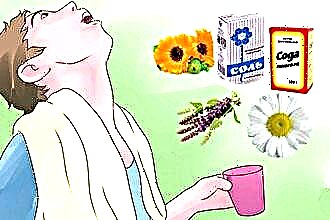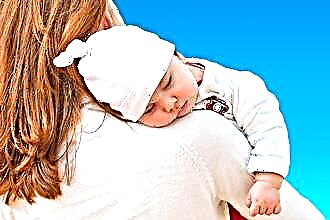Every year the number of people suffering from the symptoms of medicinal rhinitis is steadily increasing. This is due to the lack of human control over the use of nasal drugs with a vasoconstrictor effect and the rapid development of the pharmaceutical industry. Medicamentous rhinitis is a consequence of long-term use of nasal drops in large doses.
 Frequent use of drugs in this group leads to a decrease in the medicinal effect, which is why a person introduces the drug in high dosages. Thus, symptoms of a medicinal rhinitis appear.
Frequent use of drugs in this group leads to a decrease in the medicinal effect, which is why a person introduces the drug in high dosages. Thus, symptoms of a medicinal rhinitis appear.
Diffuse inflammation of the nasal mucosa, caused by the action of vasoconstrictor drugs, is a drug rhinitis. The disease has a chronic course, with timely treatment it can be completely cured.
Due to the prolonged use of the intranasal spray, at first there is a decrease in its effectiveness, then no at all. This is due to the development of resistance of local blood vessels to the action of drugs. The vessels are in an expanded state, the liquid part of the blood flows out into the tissues, which is why rhinorrhea is observed.
Causes of the disease
The main reason for the development of rhinitis medication is the uncontrolled use of vasospasmodic drugs for the nose. Their action is aimed at reducing the lumen of blood vessels at the injection site, reducing the severity of edema of the nasal mucosa, rhinorrhea, as well as temporary restoration of nasal breathing.
The consequence of an overdose of medication can be:
- a decrease in the degree of perception of hormones in the nasal mucosa. Receptors in the nasal cavities become more resistant to the action of norepinephrine, therefore they are in a dilated state;
- the occurrence of polyposis formations in the nasal passages, which further complicate nasal breathing;
- the appearance of crusts in the nose, which irritates the mucous membrane, provokes the appearance of sneezing and rhinorrhea;
- violation of the cleansing function of the ciliated epithelium. Changes in the structure of the cilia in the nasal passages lead to stagnation of mucus in the nose and the multiplication of microbes.
A runny nose of medicinal origin often develops against the background of:
- vascular dystonia, when a person is diagnosed with diseases of the cardiovascular system;
- long-term use of antihypertensive, hormonal drugs, tranquilizers, which have an effect on the vascular tone of a dilating nature;
- work in production with harmful working conditions. This applies to pharmaceutical, paint and varnish, chemical plants. Constant inhalation of air with harmful chemicals leads to irritation of the mucous membrane, the appearance of rhinorrhea.
The use of vasoconstrictor nasal agents in combination with harmful working conditions leads to the development of rhinitis, which is difficult to treat.
Clinical features
To understand how to treat rhinitis medication, you need to know the manifestations of the disease. At the initial stage of the disease, a person notices profuse rhinorrhea, nasal congestion and difficulty in nasal breathing. Taking these symptoms for signs of a common cold, the patient begins to use vasoconstrictor nasal aerosols. Their therapeutic effect is insufficient to restore nasal breathing, which is why a person increases the dose, uses another type of drug in this group.
Gradually, the vasoconstrictor effect completely disappears, the following symptoms appear:
- heaviness in the paranasal zone;
- headache;
- discomfort in the nose;
- dizziness;
- insomnia;
- irritability;
- fluctuations in blood pressure associated with impaired vascular tone;
- change in the frequency of cardiac contractions;
- decrease in the acuity of smell, taste;
- discharge from the nose of a mucous nature.
Snoring appears as a result of a violation of the patency of the nasal passages, due to which a person suffers from hypoxia.
To confirm rhinitis medication, the medical history is analyzed and an endoscopic examination of the nasopharynx is performed. In the process of diagnostics, it is revealed:
- damage to the cilia of the epithelium;
- an increase in the size of the glands;
- swelling of the mucous membrane;
- areas of altered epithelium.
Therapeutic tactics
To cure a runny nose of medicinal origin, it is necessary to take a comprehensive approach to solving this issue. Rhinitis medication can be treated with medication, surgery, and physical therapy.
Treatment of rhinitis medication should begin with the elimination of the provoking factor, that is, the refusal to use vasospasm agents for the nose. Abrupt withdrawal of nasal drugs with a vasoconstrictor effect leads to the continuation of rhinorrhea and the presence of nasal congestion. The process of weaning the nasal mucosa from drugs of this group should include:
- a gradual decrease in the dose of the medication;
- the use of nasal agents with a more gentle effect on the nasal mucosa, for example, Vibrocil;
- replacement of drugs with homeopathic medicines, as well as drops for children;
- the use of nasal solutions based on sea salt. For this, Aqualor, Dolphin, No-salt are suitable, which can be purchased at the pharmacy, or solutions from table salt, prepared at home.
 It is not always possible to cure rhinitis medication by rejecting aerosols with a vasoconstrictor effect. It is necessary to add medication to the therapy. Thanks to an integrated approach, it is possible to restore the physiological structure of the mucous membrane and eliminate the unpleasant symptoms of the disease. A favorable outcome of the disease is observed subject to early diagnosis and refusal of nasal drugs.
It is not always possible to cure rhinitis medication by rejecting aerosols with a vasoconstrictor effect. It is necessary to add medication to the therapy. Thanks to an integrated approach, it is possible to restore the physiological structure of the mucous membrane and eliminate the unpleasant symptoms of the disease. A favorable outcome of the disease is observed subject to early diagnosis and refusal of nasal drugs.
Drug treatment includes the appointment of glucocorticosteroid drugs for intranasal administration, for example, Fluticasone or Nasonex. They are applied:
- if symptoms persist after stopping the use of vasoconstrictor drugs;
- with the ineffectiveness of homeopathic medicines;
- in the presence of polyposis formations.
To reduce tissue swelling and facilitate nasal breathing, antihistamines are prescribed (Suprastin, Tsetrilev, Diazolin).
If drug treatment has not led to a positive result, surgery is prescribed. In modern otolaryngology, the following types of operations are performed:
- conchotomy, during which partial or radical removal of the nasal concha mucosa is performed;
- laser cauterization of the blood vessels of the nasal mucosa, which makes it possible to reduce tissue edema and prevent the release of the liquid part of the blood from the vascular bed, and, accordingly, rhinorrhea;
- turbino-, septoplasty, when the shape of the nasal septum changes, which makes it possible to improve nasal breathing;
- cryotherapy, when the freezing of areas of the mucous membrane with dilated blood vessels is performed.
When a doctor diagnoses rhinitis medicamentosa, treatment should be appropriate to the severity of the inflammatory process:
- at the initial stage, it is enough to cancel the use of intranasal aerosols with a vasoconstrictor effect;
- if the abolition of nasal drugs did not lead to an improvement in the condition, then the disease is in the second stage. For treatment, medications are prescribed;
- in the absence of an effect from conservative techniques, the issue of surgical intervention is considered, which indicates the neglect of the pathological process.
 Physiotherapy procedures are considered an auxiliary method of therapy. Their action is aimed at restoring vascular tone, enhancing the action of drugs and strengthening local protection to prevent infection.
Physiotherapy procedures are considered an auxiliary method of therapy. Their action is aimed at restoring vascular tone, enhancing the action of drugs and strengthening local protection to prevent infection.
Among the frequently prescribed physiotherapy procedures, it is worth highlighting inhalations with medicinal herbs, saline solution, ultraviolet irradiation, electrophoresis, and UHF.
It is important to take into account that breathing during inhalation should be carried out through the nose, which makes it possible to exert a therapeutic effect directly on the nasopharyngeal mucosa.
People's recommendations
Aloe is an effective therapeutic method for fighting the common cold. What to do with it? Aloe is indicated for use as an independent drug, as well as in combination with other drugs:
- the plant should be peeled, chopped into small cubes and squeezed out. Then you need to dilute it with water 1: 2 and bury your nose in four drops;
- aloe juice can be mixed with olive oil 1: 2, heated for 5 minutes in a water bath and cooled. The medicine is used for nasal instillation in three drops;
- honey should be dissolved in water 1: 1, lubricate the nasal mucosa;
- peach, eucalyptus, rosehip oil must be combined in an equal volume and lubricated with a cotton swab. It should be inserted into the nasal passage for 10 minutes;
- one small onion, three garlic cloves must be peeled, chopped, and then inhaled for 15 minutes;
- 15 g of chamomile is required to pour 230 ml boiling water, leave for two hours and filter. Use the infusion for rinsing the nose;
- 50 g of a mixture of equal amounts of celandine, chamomile, St. John's wort, and eucalyptus should be poured with boiling water in a volume of 1 liter and left for half an hour. Inhale the vapors twice a day.
To increase the effectiveness of traditional medicine and pharmaceuticals, it is recommended not to forget about wet cleaning and ventilation in the room. Spa treatment, maritime climate, metered sun warming, as well as walks in the fresh air are especially useful.
Prevention consists in the use of vasoconstrictor intranal drugs in strictly established doses and for a limited period (maximum 5 days).


